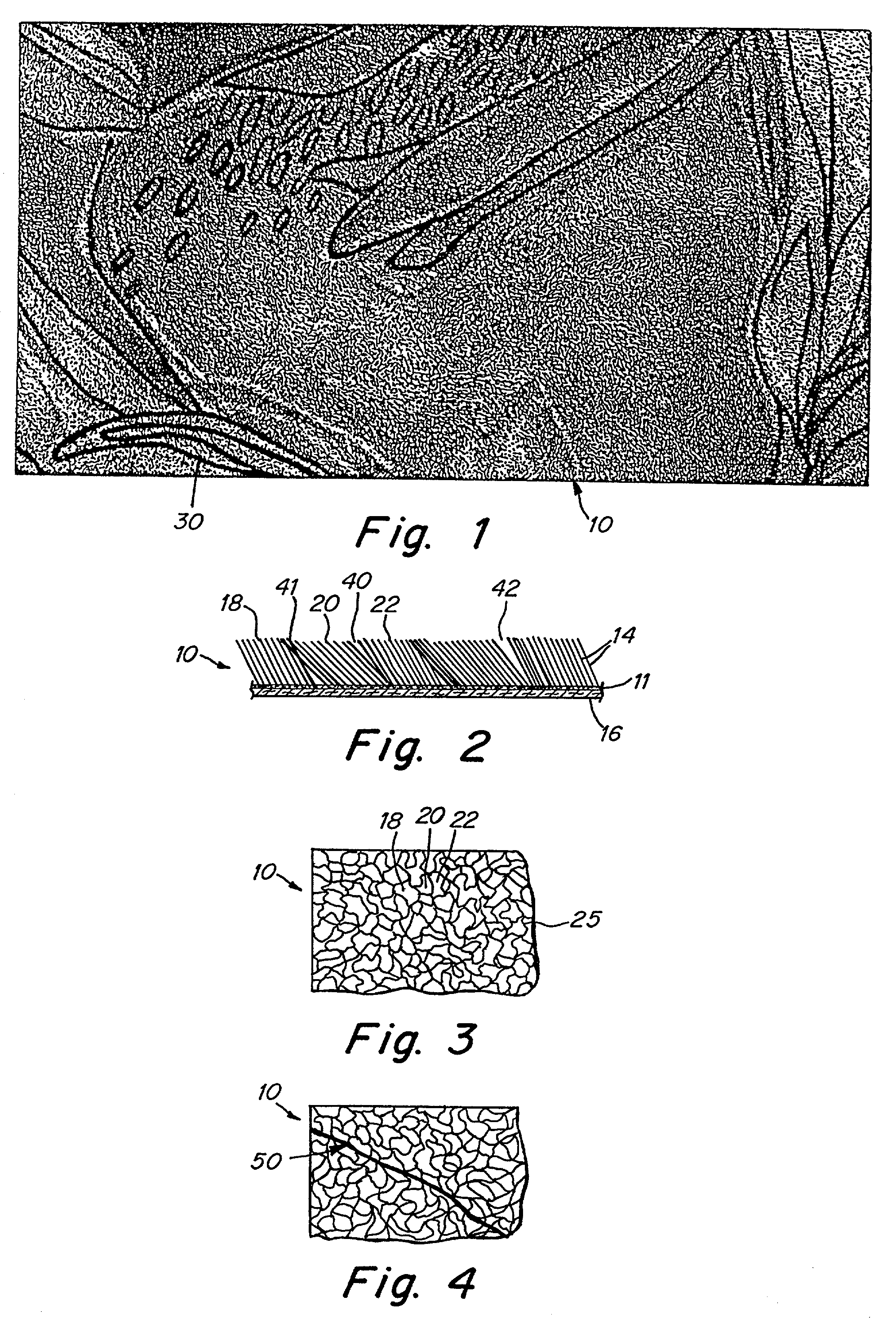Printed flocked pile fabric and method for making same
a technology of printed flocked piles and fabric, applied in pattern making, transportation and packaging, coatings, etc., can solve the problems of imperfect fabric having occasional creases, mar and distort the uniform surface of fabric, and occurrence of occasional rejects, etc., to achieve gentle crush effect, soft hand, and more volum
- Summary
- Abstract
- Description
- Claims
- Application Information
AI Technical Summary
Benefits of technology
Problems solved by technology
Method used
Image
Examples
Embodiment Construction
[0020] In a conventionally formed multicolor flocked printed pile fabric, the surface of the pile is uniform and smooth and has no effective textured appearance, because the individual fibers forming the pile are secured to the substrate at substantially parallel angles to one another. In the fabric made in accordance with the present invention, the fabric 10 is formed with a substrate 11 and flocking comprising fibers 14 secured to the substrate conventionally by a layer of adhesive 16. The fiber size, shape, and weight may vary depending upon the specific application desired. The fibers may be dyed or not dyed. Typically, in the present invention, however, the individual fibers are formed in groups 18, 20, 22, etc. of random size and shape over the entire width and length of the fabric, with the individual fibers within each group oriented in directions non-parallel to one another. Thus, for example, one group may be at an angle of 70.degree. from the substrate and extend in one d...
PUM
| Property | Measurement | Unit |
|---|---|---|
| temperatures | aaaaa | aaaaa |
| temperatures | aaaaa | aaaaa |
| angle | aaaaa | aaaaa |
Abstract
Description
Claims
Application Information
 Login to View More
Login to View More - R&D
- Intellectual Property
- Life Sciences
- Materials
- Tech Scout
- Unparalleled Data Quality
- Higher Quality Content
- 60% Fewer Hallucinations
Browse by: Latest US Patents, China's latest patents, Technical Efficacy Thesaurus, Application Domain, Technology Topic, Popular Technical Reports.
© 2025 PatSnap. All rights reserved.Legal|Privacy policy|Modern Slavery Act Transparency Statement|Sitemap|About US| Contact US: help@patsnap.com

